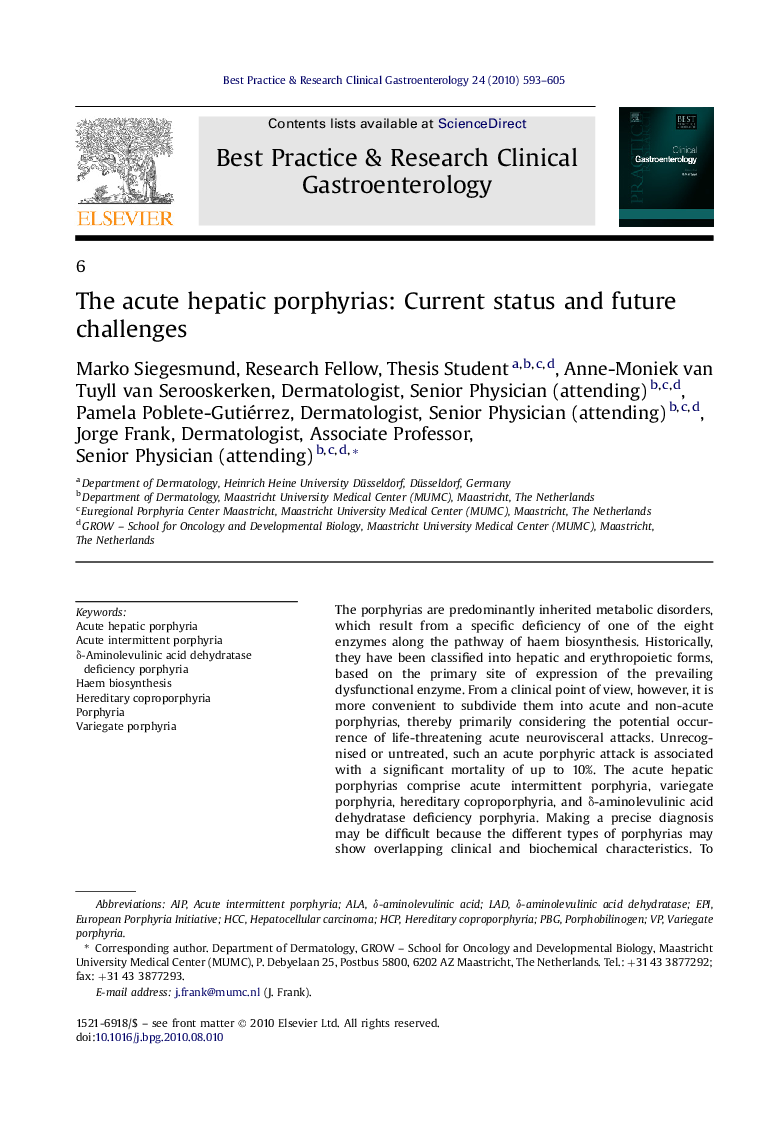| Article ID | Journal | Published Year | Pages | File Type |
|---|---|---|---|---|
| 3254287 | Best Practice & Research Clinical Gastroenterology | 2010 | 13 Pages |
The porphyrias are predominantly inherited metabolic disorders, which result from a specific deficiency of one of the eight enzymes along the pathway of haem biosynthesis. Historically, they have been classified into hepatic and erythropoietic forms, based on the primary site of expression of the prevailing dysfunctional enzyme. From a clinical point of view, however, it is more convenient to subdivide them into acute and non-acute porphyrias, thereby primarily considering the potential occurrence of life-threatening acute neurovisceral attacks. Unrecognised or untreated, such an acute porphyric attack is associated with a significant mortality of up to 10%. The acute hepatic porphyrias comprise acute intermittent porphyria, variegate porphyria, hereditary coproporphyria, and δ-aminolevulinic acid dehydratase deficiency porphyria. Making a precise diagnosis may be difficult because the different types of porphyrias may show overlapping clinical and biochemical characteristics. To date, the therapeutic possibilities are limited and mainly symptomatic. In this overview we report on what is currently known about pathogenesis, clinic, diagnostics, and therapy of the acute hepatic porphyrias. We further point out actual and future challenges in the management of these diseases.
